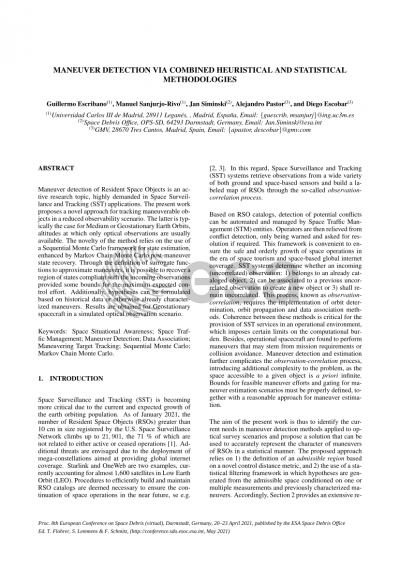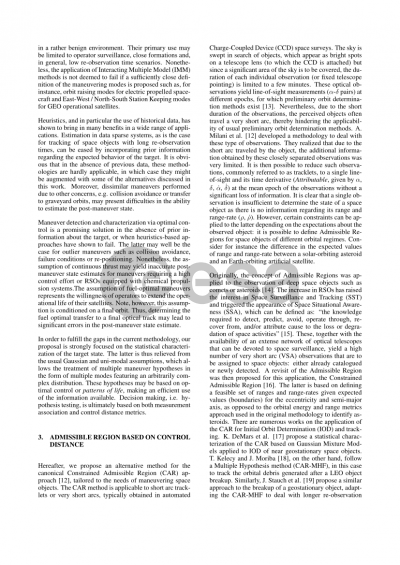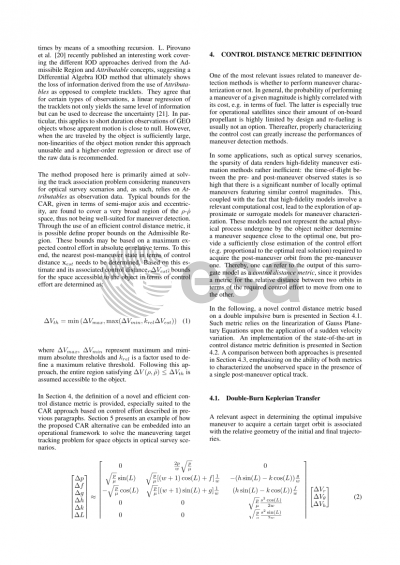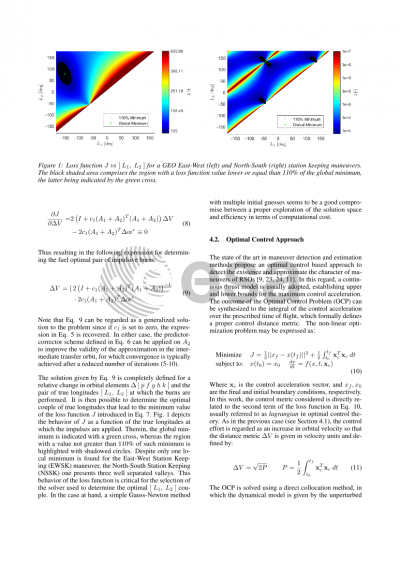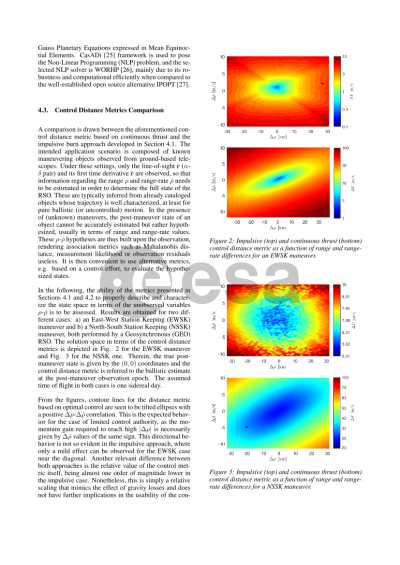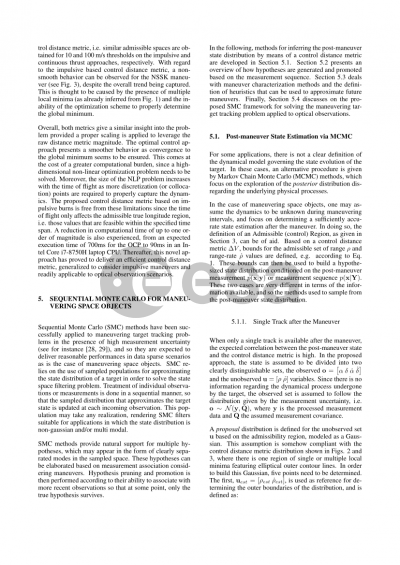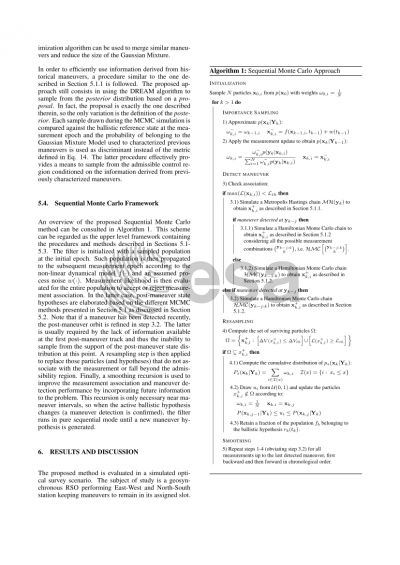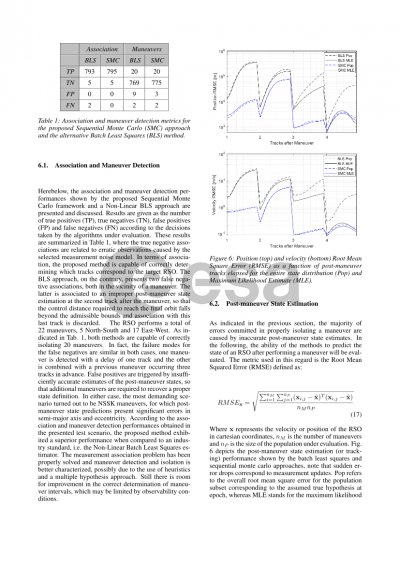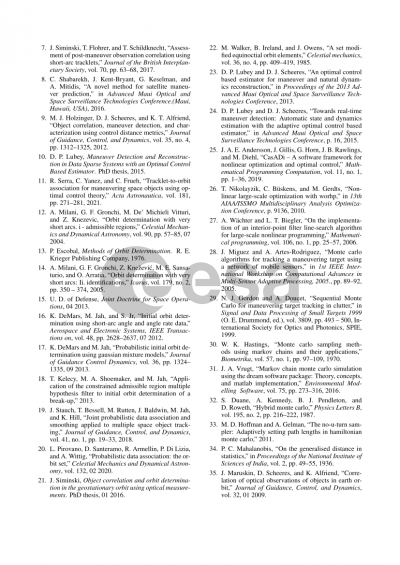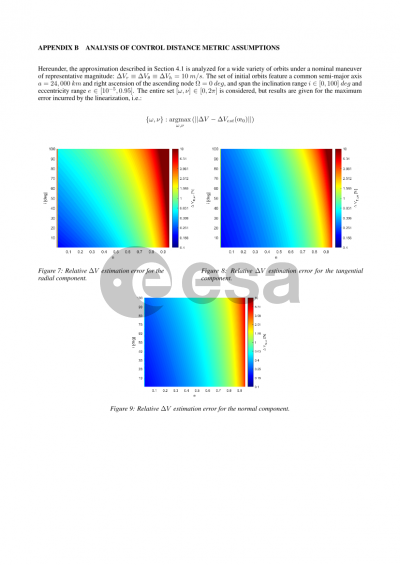Document details
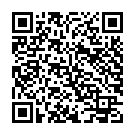
Abstract
Maneuver detection of Resident Space Objects is an active research topic, highly demanded in Space Surveillance and Tracking applications (SST). There are numerous SST systems implementing capable observation-correlation methods, yet the means to allow for maneuverable objects adds an additional layer of complexity to the problem. Many works have been directed in this regard, either based on the assumption of perturbed dynamics (Huang et al., 2012; Yang et al.,2019), an optimal control methodology (Holzinger et al., 2012; Lubey, 2015), or the use of historical data (Siminski et al., 2017; Shabarekh et al., 2016).
The present work constitutes an alternative methodology to track maneuverable objects in a reduced observability scenario. The latter is typically the case for Medium or Geostationary Earth Orbits, altitudes at which only optical observations are usually available. The novelty of the method relies on the use of a Sequential Monte Carlo (SMC) framework (Doucet et al., 1998) for state estimation, enhanced by Markov Chain Monte Carlo (MCMC) moves (Smith,1984). An inherent support for multiple hypotheses is implied in the formulation of Particle Filters or SMC methods, removing the need to explicitly implement a Multiple Hypothesis Tracking (MHT) framework (Reid, 1979). Through the definition of surrogate functions to map state transitions, i.e. approximate maneuvers, it is possible to recover a region of states compliant with the incoming observations provided some bounds for the maximum expected control effort. Moreover, additional hypotheses can be formulated based on historical data or otherwise already assumed maneuvers.
The main contribution of this work comprises a novel approach to the maneuver detection and estimation problem based on a purely statistical framework enhanced with a heuristic maneuver characterization, used to efficiently sample from the state distribution at the observation epoch. Tuning of this surrogate mapping, e.g. by means of optimal control methods, is used to validate the approach in a sub-optimal sense. In order to enhance the maneuver detection capabilities of the method, a smoothing recursion is applied to the different hypotheses. The latter contributes to a refined estimation of the maneuver interval so that optimal control policies can be used to characterize the maneuver in an off-line fashion. Already characterized maneuvers may then be fed back to the tracking algorithm in order to better approximate future events. Results are
obtained for Geostationary spacecraft both in simulated and real optical observation scenarios, and presented in the form of metrics developed ad-hoc. These metrics are mainly concerned about maneuver detection and post-maneuver state estimation, due to maneuver reconstruction being overseen during on-line tracking. Comparisons against former methods such as those based on perturbed dynamics and optimal control are drawn based the developed metrics. Finally, the adequacy of the method is analyzed in the context of the intended operational environment, focusing on the multiple-target and data association demands inherent to the cataloguing process.
REFERENCES
Doucet, A. et al. (1998). On sequential simulation-based methods for bayesian filtering.
Holzinger, M. J. et al. (2012). Object correlation, maneuver detection, and characterization using control distance metrics.
Huang, J. et al. (2012). An object correlation and maneuver detection approach for space surveillance.
Lubey, D. P. (2015). Maneuver Detection and Reconstruction in Data Sparse Systems with an Optimal Control Based Estimator.
Reid, D. (1979). An algorithm for tracking multiple targets.
Shabarekh, C. et al. (2016). A novel method for satellite maneuver prediction.
Siminski, J. et al. (2017). Assessment of post-maneuver observation correlation using short-arc tracklets.
Smith, R. L. (1984). Efficient monte carlo procedures for generating points uniformly distributed over bounded regions.
Yang, Z. et al. (2019). Nonlinear semi-analytical uncertainty propagation of trajectory under impulsive maneuvers.
Preview
